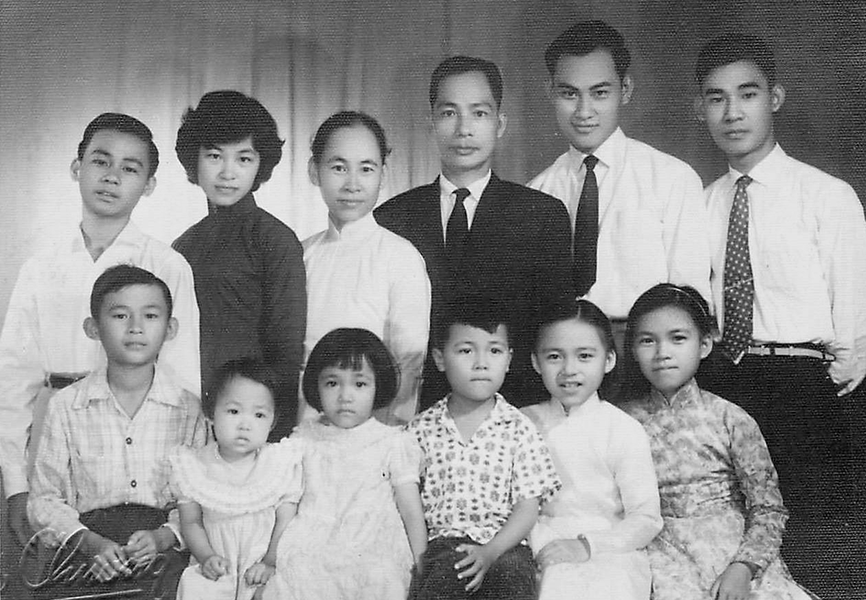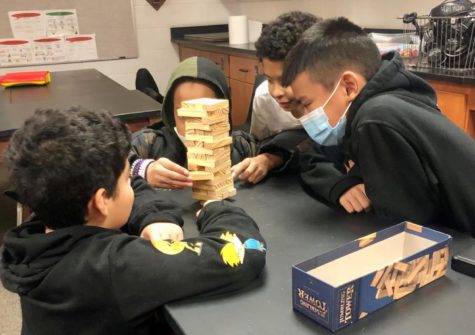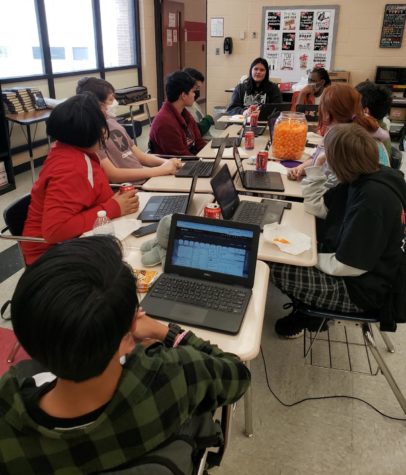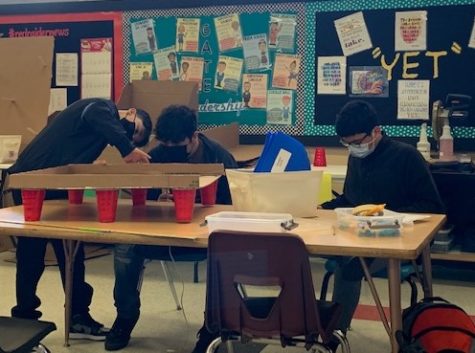Mr. Pham Shares Experience of Escaping Communist Invasion of South Viet Nam
Today, Mr. Pham teaches freshmen how to solve algebraic equations, but in 1975, he was a student in Survival 101. Through prayer and quick thinking, Mr. Pham and his family survived a harrowing and miraculous escape from Communist forces invading South Viet Nam after the U.S. troops had evacuated.
With two thirds of Viet Nam controlled by the Northern Vietnamese Communists, Mr. Pham faced a difficult decision: leave his war-torn home country or wait for a complete Communist takeover, which certainly meant prison or execution.
“After much prayer and thought, I got my family together to make our plans,” Mr. Pham said. “We agreed that we would either live together or die together.”
Mr. Pham, along with his wife and their two daughters, opted to leave Viet Nam. The question became “How?”
Chaos consumed Saigon as millions of panicked refugees poured in from places overrun by the Communists. To get to Thailand, the Phams would have to cross Communist-controlled Cambodia or take a boat into the pirate-filled Gulf of Thailand. To reach the Philippines, they would have to cross the vast South China sea.
“We felt trapped,” Mr. Pham said. “The only way to leave the country was by air, but commercial air travel was severely restricted.”
Luckily, Mr. Pham’s brother Pham Quang Khiem, a transport pilot in the Vietnamese Air Force, had an idea of how to fly them all out of the country. Working with Mr. Pham’s childhood friend Major Nguyen huu Canh, Khiem accessed a Lockheed-built C-130 transport plane. The catch? Mr. Pham had to successfully get his family to the abandoned airfield about sixty miles from Saigon.
“My daughters Bao Tram, age nine, and Bao Truc, age six, thought we going on a vacation,” Mr. Pham said. “They were too young to know the seriousness of the situation.”
Mr. Pham’s wife chose to only pack important, irreplaceable items such as diplomas and family pictures, plus some clothing — whatever could fit into two small suitcases. They rounded up fifty-six relatives and friends assuring them that their safety could not be guaranteed.
“I asked my father to lead us in prayer,” Mr. Pham said. “We all burst out crying. We felt we were being forced out of our country without any hope of ever returning.”
The ninety-minute trip took three hours because traffic had slowed to a snail’s pace due to the all of the refugees flooding into Saigon.
Khiem had flown in on time and had continuously circled the landing strip. By the time the group arrived, a black Jeep with about six fully-armed soldiers greeted them. One jumped out and aimed his grenade launcher at the nose of the plane. The rest of the soldiers lined up on both sides of the runway, their guns pointed at them. Going against the strong prop wind, Mr. Pham, his family, and friends frantically clambered onto the back ramp of the plane. Spotting an 80-year-old woman struggling against the prop wind, Mr. Pham jumped out to rescue her and get her onto the plane.
With a cargo of exhausted and terrified Vietnamese people, Khiem headed the plane, back ramp still open, to Singapore, the only remaining place safe enough to go.
“I had prepared a statement of purpose in which we said that we made this escape for two reasons: we did not want to live under Communism, and we wanted to keep our Christian heritage,” Mr. Pham said.
Because they had entered Singapore airspace illegally, the plane was surrounded by military police upon landing. Singaporean officials issued two options: buy enough fuel to go to the next destination or face deportation back to Viet Nam. The group’s combined resources only provided $100.
“We decided that if God wanted us to die, so be it,” Mr. Pham said. “We would accept His will.”
The group was escorted by separate prison trucks to a detention center outside of Singapore. Wearing prison uniforms, they were cut off completely from the outside world. After three weeks of despair, Mr. Pham, his family, and friends were flown to safety. They learned that several attempts had been made to send them back to Viet Nam for trial and possible execution, but the head of the prison system in Singapore had stopped those attempts every time.
In Saipan, Mr. Pham and his group stayed at a luxurious hotel, not knowing who was paying the bill.
“Going from the jail’s conditions in Singapore with little to eat to the most luxurious hotel in Saipan with plenty to eat was like going from Hell to Heaven,” Mr. Pham said.
After a week in Saipan, Mr. Pham and his group met other refugees in Guam and learned that South Viet Nam had fallen to the Communists.
“People by the thousands were trying to get out of Viet Nam by any means to avoid being killed or jailed,” Mr. Pham said. “Many of them drowned while trying to escape the country.”
Mr. Pham and his family ended up at Camp Pendleton, California, where they were processed into the U.S. before joining their sponsor family in Ohio. Having already earned bachelor degrees in English Education and Economics from the University of Saigon, Mr. Pham went on to earn masters degrees in Iowa for Business Administration and Teaching English to Speakers of Other Languages (TESOL).
Mr. Pham’s oldest daughter, Bao Tram, attended Kimmons in the mid 1970s and is now an electrical engineer working for Hewlet Packard. Bao Truc, who attended Sutton Elementary School, graduated from Harvard and is now a professor in Economics at Drexel University in Philadelphia, Pennsylvania.
“Our saga still leaves us with many puzzles,” Mr. Pham said. “Why were we saved and protected while others lost their lives in the high sea trying to escape? I don’t believe these were mere coincidences but instead divine plans. We lost everything during our escape, but we did not lose our faith.”












